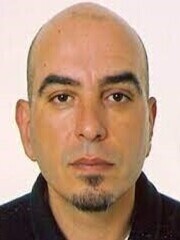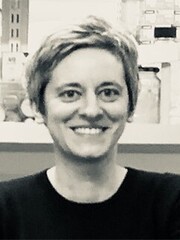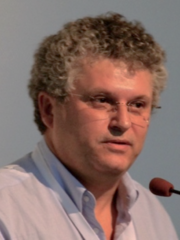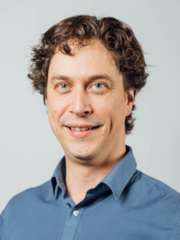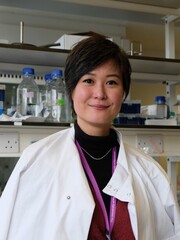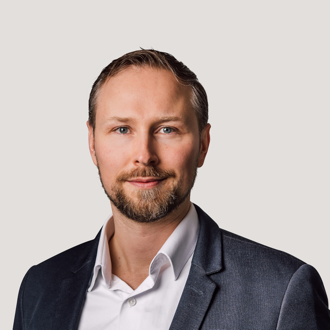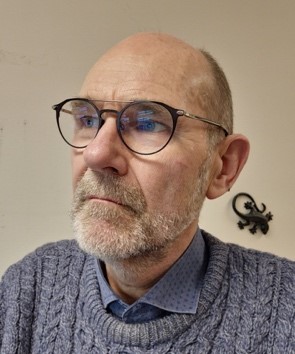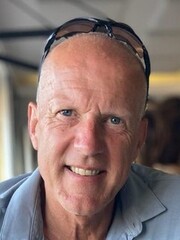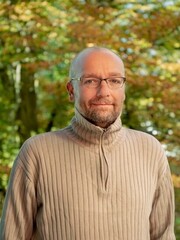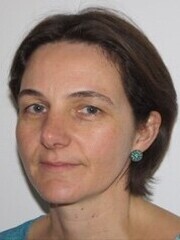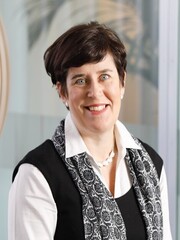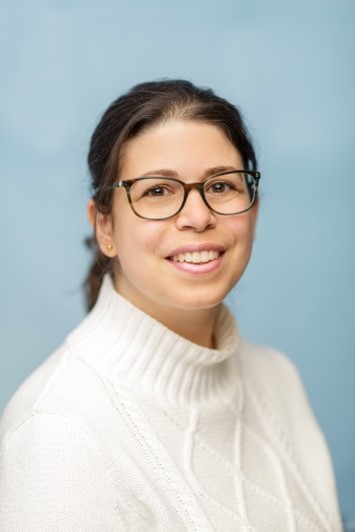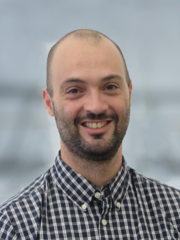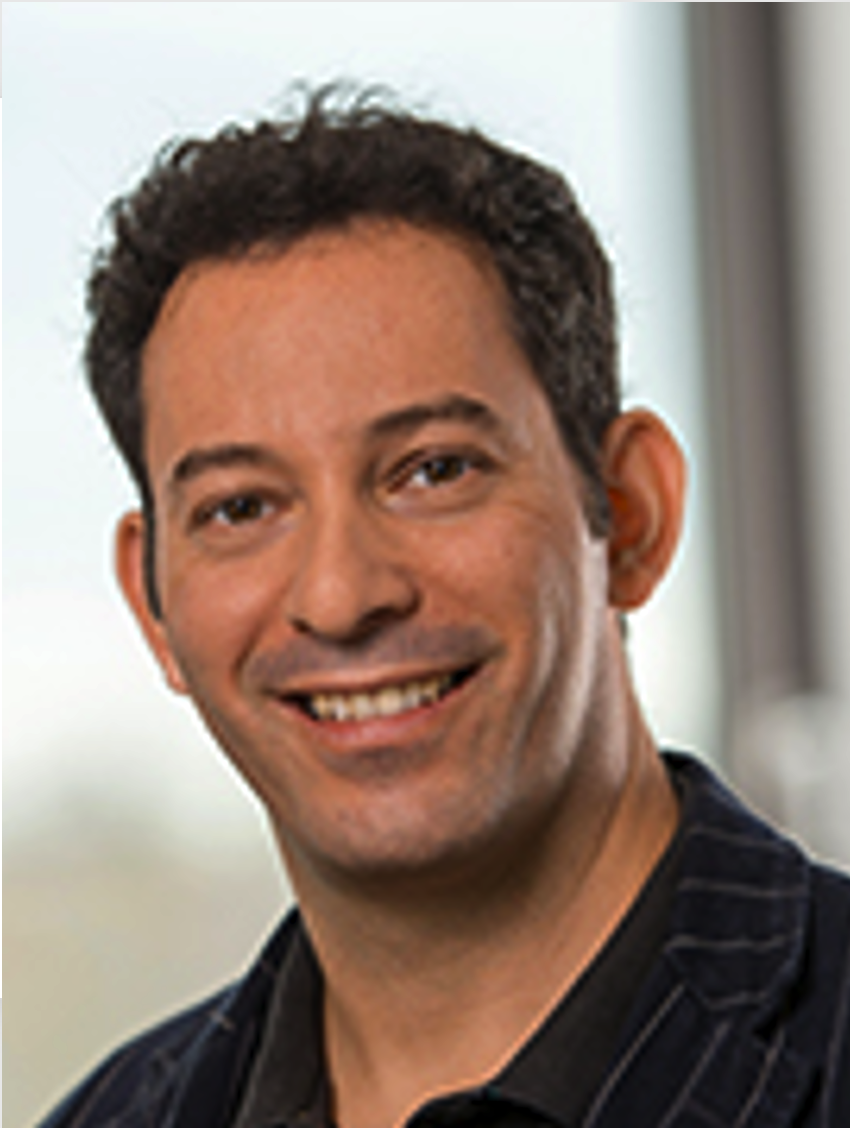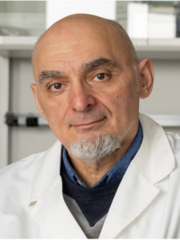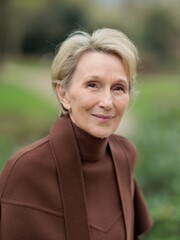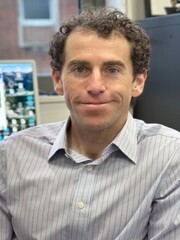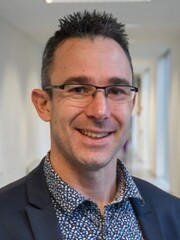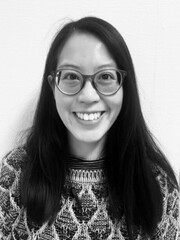
|
|
|
Program > Invited speakersProfessor Vassilis Aidinis, Biomedical Sciences Research Center Alexander Fleming, Athens, Greece
Vassilis Aidinis is a Professor at the Institute of Immunology, BSRC Fleming in Athens since 2012. One primary focus of his group is to dissect the molecular and genetic mechanisms underlying pathogenesis in the development of pulmonary inflammation, fibrosis, and cancer. He employs the bleomycin-induced pulmonary inflammation and fibrosis animal model, along with 3D extracellular matrix (ECM) fibroblast cell-based systems, to investigate the potential involvement of various mediators through genetic modifications and pharmacologic interventions. These studies are complemented by assessments of respiratory and metabolic functions, expression profiling, and translational research. Currently, his lab is particularly interested in exploring the bidirectional interaction between pulmonary fibroblasts and ECM components.
Doctor Marie Bréau, Sorbonne Université, Paris, France
Marie Bréau is the leader of the team « Mechanics of neuronal development » at the Institut de Biologie Paris Seine, Sorbonne Université. Her group combines quantitative live imaging with genetic and biophysical approaches to investigate the poorly explored role of mechanical forces in the development of the nervous system, including the key contribution of the ECM.
Professor Paolo Bonaldo, University of Padova, Italy
Paolo Bonaldo is full professor of Cell Biology and head of Matrix Biology and Functional Genomics unit at the Department of Molecular Medicine, University of Padova. He authored 177 full-length publications in peer-reviewed journals, with over 21,000 citations and an H-index of 60. He has a long-lasting expertise in animal models and functional genomics of matrix components, with a major interest in collagen VI and its roles in tissue homeostasis and disease.
Professor Bert Callewaert, University of Ghent, Belgium
Bert Callewaert is a pediatrician and clinical geneticist. In 2010, he obtained his PhD on inherited elastinopathies under supervision of Anne De Paepe, Bart Loeys (Ghent University) and Zsolt Urban (St-Louis, MO). Since 2014, he is Head of Clinic at the Center for Medical Genetics of Ghent University Hospital. As Senior Clinical Investigator of the Research Foundation – Flanders, he leads a team that investigates the pathophysiology of diverse monogenic conditions using cellular, zebrafish and mice modeling. He obtained international recognition for his work on arterial tortuosity syndrome and cutis laxa and is active in several national (Belgian Society for Human Genetics, Flemish Network for Rare Diseases) and international organizations (European reference networks for skin disorders (ERN-skin), vascular disorders (VascERN) and for congenital malformations and intellectual disability (ITHACA), ClinGen, Cutis laxa internationale, A Twist of Fate-ATS, Myhre syndrome Foundation) to optimize the care for rare disease.
Doctor Joan Chang, University of Manchester, United Kingdom
Joan Chang completed her PhD in the role of LOXL2 in breast cancer metastasis at the Institute of Cancer Research, University of London, under the tutelage of Dr Janine Erler. This is followed by a postdoc position at the University of North Carolina at Chapel Hill, working with Dr Andrew Dudley on adipocytes and the tumour microenvironment. In late 2016, Joan started working with Prof Karl Kadler at the University of Manchester, investigating how the circadian rhythm controls collagen-I homeostasis. Joan started her own group in April 2022 as a UKRI MRC CDA Research Fellow. She is part of the leadership team of the Manchester Cell Matrix Centre, University of Manchester, and her lab focusses on investigating the intra- and inter-cellular molecular mechanisms that controls collagen-I trafficking in health and disease.
Doctor Collin Ewald, Novartis Institute for BioMedical Research, Basel, Switzerland
Collin is an associate director of Diseases of Aging and Regenerative Medicine (DARe) at the Novartis Institutes for BioMedical Research. He is also the vice president of the Swiss Society for Matrix Biology. Collin has a longstanding interest in understanding the aging process and how to alter this process to slow age-related functional decline, removal of molecular damage accumulation, and postpone age-dependent diseases. His current research focuses on elucidating the molecular mechanisms to restore tissue function and health during aging
Professor Marco Harmsen, University Medical Center, Groningen, Netherlands
Marco Harmsen is professor of Cardiovascular Regenerative Medicine in the Department of Pathology and Medical Biology of the University Medical Center Groningen (Netherlands) and former chair of the Dutch Society for Matrix Biology. His research is translational, particularly when he got engaged with plastic surgeons that applied fat grafting for decades to resolve scars and improve wound healing… but without knowing underlying mechanisms. Upon unraveling the influence of individual components of fat in therapy, his research currently focuses on the triad of ECM, mesenchymal and endothelial cells and mechanics in fibroproliferative disease such as organ fibrosis and dermal scarring. As it appears, hydrogels of organ-derived ECM not only are exciting for research but may hold clinical and economical value too, a path that is developed at present. Harmsen published around 250 peer-reviewed papers and book chapters and holds a number of patents
Professor Martin Humphries, University of Manchester, United Kingdom
Martin Humphries is Professor of Biochemistry at the University of Manchester. The long-term aim of the research conducted in his laboratory is to elucidate the mechanisms by which adhesion controls cell behaviour. A current focus is the ternary connection between extracellular matrix rigidity, signals transduced by adhesion receptor-associated complexes and cell cycle progression.
Doctor Thomas Kammertöns, Charité Universitätsmedizin, Berlin, Germany
Thomas Kammertönsstarted in immunology with Lawrence D. Kerr at Vanderbilt University (1994-95) and continued studying allergology at the Charité with Harald Renz (1995-96) to join Thomas Blumenstein’s Group in 1996. He leads a small team working in Oncoimmunology on IFNg and IL-4 in the tumor microenvironment during tumorigenesis and therapy. Recently, he described a new role for IFNg binding heparan sulfate in the ECM.
Doctor Catherine Moali, University of Lyon, France
Catherine Moali is a research director at CNRS and a group leader at the Tissue Biology and Therapeutic Engineering Laboratory in Lyon, France since 2011. She has a multidisciplinary background in chemistry and biology and her early interest in metalloenzymes has fostered a long-lasting focus on extracellular metalloproteinases. In the past twenty years, she made significant contributions to the understanding of the functions of the metalloproteinases involved in the assembly of collagen fibrils (BMP-1, Tolloid enzymes, meprins, ADAMTS-2, -3, -14). She also unraveled new activities for these enzymes in the context of ECM assembly and growth factor activation and new mechanisms of regulation by PCPEs and sFRPs. Finally, her work led to the development of new therapeutic strategies to regulate proteolytic activities in the context of fibrosis.
Professor Johanna Millyharju, University of Oulu, Finland
Johanna Myllyharju is a Professor of Molecular Biology at the University of Oulu, Finland. She is an expert on the key enzymes, particularly prolyl 4-hydroxylases, required for collagen synthesis. Proper collagen synthesis and assembly are vital for normal functioning of cells and tissues, and their disturbances are associated with many diseases. Detailed information on prolyl 4-hydroxylase isoenzymes is essential for understanding their molecular mechanisms and biological effects on extracellular matrix homeostasis.
Doctor Alexandra Naba, University of Illinois Chicago, USA
Alexandra Naba is an Associate Professor in the Department of Physiology and Biophysics at the University of Illinois Chicago. Her laboratory uses classical molecular, cellular, and developmental biology approaches in combination with cutting-edge proteomics and computational analyses to study the roles of the extracellular matrix in development, health, and disease. Alexandra is also the founder of the Matrisome Project (https://matrisome.org), a centralized web portal aiming to facilitate the dissemination of protocols, reagents, computational tools, and other resources to advance ECM research. Alexandra’s pioneering work in the field of ECM proteomics was recognized by multiple awards, including the 2018 the Junior Investigator award from the American Society for Matrix Biology (ASMB) and the 2018 Rupert Timpl award from the International Society for Matrix Biology (ISMB).
Ellen Van Obberghen-Schilling, University Côte d'Azur, Nice, France
Ellen Van Obberghen-Schilling, Emeritus Inserm Research Director at the Institute of Biology Valrose, Université Côte d’Azur (Nice, France) and chairholder at the Université Côte d’Azur Artificial Intelligence Research Institute, is internationally recognized for her research on adhesion signaling, matrix assembly and function within the tumor microenvironment, with a specific focus on head and neck tumors. Her studies leverage a collaborative network of biologists, computational bioimaging specialists, and clinical researchers at the Nice Cancer Center and the Unicancer Head and Neck Group, fostering interdisciplinary advancements in cancer research.
Doctor Francesco Pasqualini, University of Pavia, Italy
Francesco Pasqualini is an associate professor of industrial bioengineering at the University of Pavia, where he has led the ERC-funded Synthetic Physiology Laboratory since 2021. Formerly, he was a visiting Ph.D. student, a post-doc, and eventually a non-tenure-tracked faculty at the Wyss Institute at Harvard University in Boston and the Wyss Translational Center at the University and ETH Zurich. There, he worked with Prof. Kit Parker and Prof. Simon Hoerstrup on various cardiac tissue engineering projects spanning from stem cell quality control to organs-on-chips to ECM-based regenerative prostheses. At the Synthetic Physiology Lab, he leads a multidisciplinary group that engineers new tools to probe ECM-cell interactions in morphogenetic systems such as myocardial development.
Doctor Yuval Rinkevich, Institute of Regenerative Biology and Medicine, Helmholtz Center, Munich, Germany
Yuval Rinkevich has been working at the cutting edge of our understanding of tissue/organ repair and regeneration for the last 20 years. His passion for healing responses and tissue rejuvenation can be traced throughout his career track, obtaining his PhD degree from the Technion-Israel Institute of Technology, where he studied whole body regeneration from single blood vessels in Protochordates. He moved to Stanford University (USA) to join the lab of Prof. Irving L. Weissman, where he explored the cellular lineages and stem cells in mammalian tissue repair and regeneration. Today he is the Director of the Helmholtz Institute of Regenerative Biology and Medicine at the Helmholtz Center, Munich, Germany. His latest work describing the fascia in tissue fibrosis in multiple organ systems is reinventing the way we look at tissue repair and regeneration, opening our minds to a revolution in antifibrotic therapy and the potential to prevent and potentially resolve fibrotic disease.
Professor J. Carlos Rodriguez-Cabello, Universidad of Valladolid, Spain
Carlos Rodríguez-Cabello initially earned a degree in Chemistry, specializing in Biochemistry, and later, a second degree in Physics with a focus on Condensed Matter at the University of Valladolid, where he earned his doctoral degree. Currently, he serves as a full professor in the Condensed Matter Physics department at that University and leads the BIOFORGE Lab. His research group has been at the forefront of developing recombinamers, showcasing the innovative use of genetic engineering and biotechnologies to create advanced materials. His research interests range from understanding fundamental aspects of self-organization and the interplay between order and disorder in protein-like systems, to exploring the practical applications of these materials in regenerative medicine, nanomedicine, and nanotechnology. Carlos Rodríguez-Cabello is also the co-founder of two startups: Technical Proteins Nanobiotechnology SL, where he serves as CEO, and CellDrive 3D S.L., where he is the Chief Scientific Adviser.
Professor Lydia Sorokin, University of Münster, Germany
Lydia Sorokin is director of the Institute of Physiological Chemistry and Pathobiochemstry at the University of Münster, Germany. Her works deals with inflammation and basement membranes, with focus on blood vessels of the brain and how they differ to blood vessels of other tissues. A large portion of the work carried out in the Sorokin lab involves high resolution imaging and intravital microscopy, mainly of leukocyte extravasating events. More recently, 3D hydrogel models of the blood brain barrier are being established which incorporate not only the cellular components but also the basement membranes of cerebral vessels.This opens opportunities for defining the cellular versus extracellular matrix contribution to the unique barrier function of cerebral vessels, and permits live imaging of leukocyte recruitment and migration across the vessel wall.
Professor Brian M. Stramer, King's College London, London, United Kingdom
Brian M. Stramer is a Professor of Cell and Developmental Biology at the Randall Centre for Cell and Molecular Biophysics at King’s College London. His lab exploits Drosophila genetics and their capacity to live image animal development to understand the regulation of cell migration and ECM formation during tissue morphogenesis. He recently turned our attention to the developing fly basement membrane, revealing that it is highly dynamic during embryogenesis and playing an active role in driving alterations in tissue shape. He is now developing several biochemical and live imaging approaches to understand progressive changes to basement membrane dynamics and stability from its embryonic inception to adult maturation.
Professor Lieven Thorrez, KU Leuven, Belgium
Lieven Thorrez (KU Leuven, Belgium) has a multidisciplinary background in biomedical sciences. He performed research in development of viral vectors for targeted gene delivery, stem cell biology, muscle tissue engineering, applied bioinformatics, systems biology and evolutionary biology. His current research involves cell isolation, expansion and characterization, engineering a blood vessel network in muscle, development of methods for muscle stimulation and de- and recellularization methods towards applications including drug testing, regenerative medicine and cultured meat production.
Doctor Daniel Wehner, Max Planck Institute, Erlangen, Germany
Daniel Wehner is head of the Neuroregeneration research group at the Max Planck Institute for the Science of Light and the Max-Planck-Zentrum für Physik und Medizin in Erlangen, Germany. His research focusses on elucidating the principles that can lead to functional axonal regeneration in a complex vertebrate central nervous system, with a particular emphasis on the extracellular matrix. His goal is to inform research in non-regenerating systems.
Doctor Chloé Yeung, Institute of Sports Medicine Copenhagen, Denmark
|
